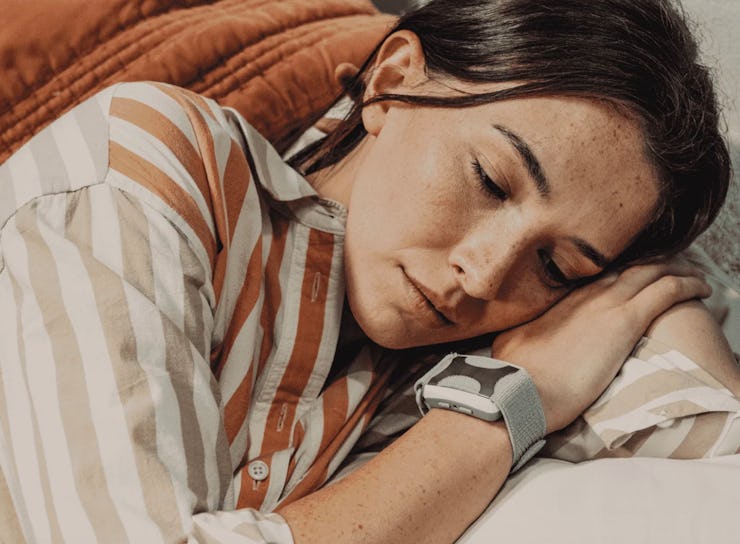Can this neuroscientist-created wearable really hack your moods for less stress, more energy, and deeper sleep?
A writer’s thoughts after using it for about a year.

The ability to hack your mood on demand might seem like the premise of a new sci-fi show, but thanks to a team led by neuroscientists and physicians, that technology is already here — and it’s backed up by research. The Apollo wearable uses waves of vibrations in varying strengths and speeds to communicate with your nervous system, which puts you back in the driver’s seat when it comes to managing stress, boosting energy, or achieving deeper sleep. I’ve had The Apollo for about a year now, and it’s become one of my go-to tools for low-maintenance well-being.
Fast facts:
- A non-invasive wearable that lets you choose how you want to feel
- Uses touch therapy to communicate with and balance your nervous system
- Set the mode, duration, and intensity from your smartphone
- Wear it around your wrist/ankle or clip it to your clothing
- Use it three hours a day, five days a week for best results
My Apollo Wearable experience
I try to meditate, journal, and do yoga and breathwork as often as I can — but as a type-A person, I often find myself making to-do lists in my head and rushing through wellness activities so I can start my day. My favorite thing about the Apollo is that I can wear it while working, walking, doing chores, and reading, so it helps to moderate my mood without hindering my productivity.
I typically wear it around my ankle (though you can also wear it on your wrist), and I find the band comfortable and the vibrations non-distracting, especially since you can adjust the intensity of the vibrations on the app.
My only complaint: Since the battery lasts between six and eight hours, the Apollo requires frequent charging. I don’t use it as often as recommended solely because I often forget to charge it after every use, so it’s not always ready when I need it.
What does the science say?
One of the things that drew me to the Apollo wearable was the extensive body of research behind it. Across seven completed clinical studies and more than 1,500 research subjects in total, Apollo users experienced on average 40% less stress, up to 19% more time deeply sleeping, and up to 25% more focus.
How does the Apollo wearable work?
The Apollo comes with both an adjustable band for wear around your wrist or ankle, and a clip if you’d rather attach it to your shirt, bra, or waistband. Using an app on your phone, you can choose one of eight “Vibes”: Energy, Social, Focus, Power Nap, Recover, Calm, Unwind, and Fall Asleep. (Apollo's optional SmartVibes membership also has a SmartVibes For Sleep feature, which learns your patterns and personalizes your Vibes accordingly for deeper, faster sleep.)
Each mode sends a different frequency of soothing vibrations to your Apollo, which communicates with your nervous system using touch therapy. Higher vibrations improve energy and focus, while lower vibrations help you relax. As a result, the Apollo acts as a remote control that lets you choose how you want to feel throughout your day, and you can even create daily schedules to help you transition.
This article was originally published on